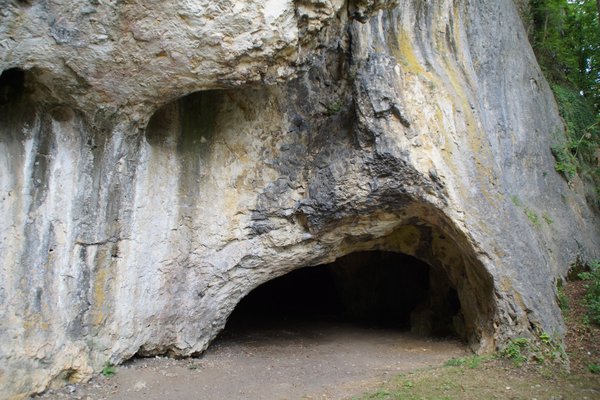Germany
Caves and Ice Age Art
The Caves and Ice Age Art in the Swabian Jura comprise archaeological sites from the Aurignacian period where stone tools, figurative art and early musical instruments have been found.
These six caves in the Ach Valley and along the Lone River have produced evidence of the presence of modern humans who arrived in Europe some 43,000 years ago. The discovered objects were carved from various materials, including mammoth ivory. They include the figurines of the ‘Venus of Hohle Fels’ and the ‘Lion Man’.
Community Perspective: The findings were amazing, but unfortunately they are moveable and have been shipped to museums long ago. A visit won’t be complete without a visit to one of those – the Urgeschichtliches Museum in Blaubeuren is recommended. Among the actual caves, Hohle Fels is the most impressive; Hubert gives a good overview of them all. Nan has described how to get around the area on public transport and Clyde provided an itinerary by car.
Site Info
Official Information
- Full Name
- Caves and Ice Age Art in the Swabian Jura (ID: 1527)
- Country
- Germany
- Status
-
Inscribed 2017
Site history
History of Caves and Ice Age Art
- 2017: Inscribed
- Inscribed
- Type
- Cultural
- Criteria
- iii
Links
- UNESCO
- whc.unesco.org
- Official
-
- iceageart.de — Ice Age Art
All Links
UNESCO.org
- whc.unesco.org — whc.unesco.org/
Official Website
- iceageart.de — Ice Age Art
Community Information
- Community Category
- Archaeological site: Prehistoric
Travel Information
Frankfurt hotspot
Recent Connections
-
Astronomy and Astrology
Geisenklösterle -
Stuttgart Hotspot
-
Frankfurt hotspot
2:40h Blaubeuren by train
Connections of Caves and Ice Age Art
- History
-
-
Aurignacian
the focus of the nomination is on those deposits in the six caves from the Aurignacian period (AB ev) -
Neanderthals
"these six caves have revealed a long record of human presence and an earlier Neanderthal presence before that" (AB ev, unspecified)
-
- Ecology
-
-
Mammoths
mammoth ivory objects
-
- World Heritage Process
- Timeline
-
-
Late Pleistocene
Aurignacian period (dates from 43,000 to 33,000 years ago) AB ev
-
- WHS Hotspots
-
-
Frankfurt hotspot
2:40h Blaubeuren by train -
Stuttgart Hotspot
-
- Science and Technology
-
-
Astronomy and Astrology
Geisenklösterle
-
News
No news.
Recent Visitors
Visitors of Caves and Ice Age Art
- Adrian
- Adrian Turtschi
- Alexander Barabanov
- Alexander Lehmann
- A. Mehmet Haksever
- Ana Lozano
- Argo
- Aspasia
- Astraftis
- Atila Ege
- BaziFettehenne
- Bin
- Can SARICA
- Caspar
- Cezar Grozavu
- Christoph
- Christravelblog
- Claire Bradshaw
- Clyde
- Colossus
- Csaba Nováczky
- ctravel
- CugelVance
- Daniel Chazad
- Daniel Gabi
- Danieljbromberg
- Danny L
- Dan Pettigrew
- David Berlanda
- Dimitar Krastev
- Dirk-pieter
- Dorejd
- Els Slots
- Errol Neo
- Eva Kisgyorgy
- Evgenii
- fabi-ddorf
- Fan Yibo
- Federico P.
- Feldhase
- FS
- George Gdanski
- GeorgeIng61
- Harald T.
- Harry Mitsidis
- heywhatever2
- Hubert
- Iain Jackson
- Ivan Rucek
- Jakob F.
- James Bowyer
- Janina Lehmann
- Jan-Willem
- Jan Zimmermann
- Jarek Pokrzywnicki
- Jay T
- Jean Lecaillon
- Jeffrey Chai
- Jesse S 2010
- Jezza
- Joel on the Road
- Jonas Kremer
- Just_hatched
- KarenBMoore
- Kasia M.
- Kbecq
- Klaus Freisinger
- Knut
- Lara Adler
- lichia
- Lisu Marian
- Luboang
- Lucio
- Ludvan
- Luis Filipe Gaspar
- Manuelfunk
- marc Rouserez
- Martin
- Martina Rúčková
- Matejicek
- MaxHeAnouBen
- MaYumin
- MH
- Mikko
- MoPython
- nan
- Nihal Ege
- Patrik
- PeterH
- Peter Lööv
- Petteri
- Philipp Leu
- Philipp Peterer
- Piotr Wasil
- Porcho
- puessergio
- Rafał Kałczuga
- Ralf Regele
- Ralf Rotheimer
- Randi Thomsen
- Reisedachs
- Roger Ourset
- Roman Bruehwiler
- Rudegirl
- Sabrina Liebehentschel
- Sandmann15
- Schnitzel
- scubarrie
- Sebasfhb
- Sehnsuchtsbummler
- Shandos Cleaver
- shoaibmnagi
- Solivagant
- Stanislaw Warwas
- Stijn
- Svein Elias
- Szucs Tamas
- Taotao Chen
- Tarquinio_Superbo
- Thomas Buechler
- Thomas Harold Watson
- Thomas van der Walt
- Thorben
- Tim Allen
- triath
- Tsunami
- usagi1974
- Vanessa Buechler
- VLabhard
- WalGra
- Walter
- Wojciech Fedoruk
- Wo_ko
- Xiquinho Silva
- Yevhen Ivanovych
- Zoë Sheng
Community Reviews
Show full reviews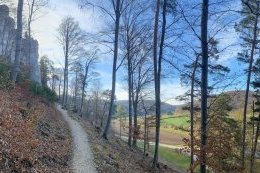
I visited both Geißenklösterle and Sirgenstein Cave. I went during off season, so the larger and more impressive cave in that section was closed to the public.
But for the other two:
Really lovely place. At first glance the caves are underwhelming, they basically look like any other small cave that you have seen. However there's something fascinating about being in a place where people were making art 40k years ago. It blew my mind as soon as I entered the caves.
The walk/run/bike between the caves is also very very beautiful and worth taking your time to connect with it. And the Blaubeuren museum is a must.
I wouldnt recommend it unless you're very interested in art history, otherwise it is just boring caves.
Keep reading 0 comments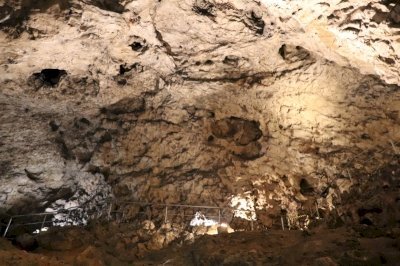
In May 2016 we stopped at the Vogelherdhöhle due to to potential WHS Status. There was not much to see, we just took a hike to the entrance.
Now in July 2022 we finally visited the highest church in the world in Ulm and stopped shortly after at the cave Hohle Fels. I took a short tour to the inside with my daughter. We could watch archaelogists at their excavation work and learned a bit about the former inhabitants of the cave. Worth visiting is also the surrounding. The Ach-Tal ist especially beautiful between Blaubeuren and Hohle Fels.
Keep reading 0 comments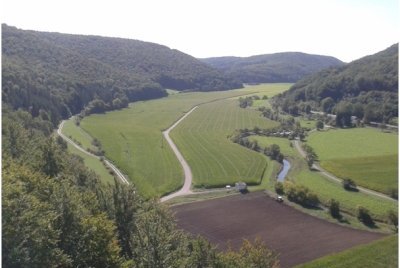
Paleolithic cave art has romantic conotations for me. There is very popular Czech (children) book called Mammoth Hunters by Eduard Storch, first published in 1918, but it became famous due to very realistic illustrations by Zdenek Burian in 1937. It is based on archeological excavations in Southern Moravia. The most famous artefact from this place and period is the Venus of Dolni Vestonice, which is around 25-29 000 years old (Gravettian period), and it is the oldest known ceramic statue in the world. Thus, cavemen belong to a common knowledge in Czechia, at least for my generation.
Thus, I was quite surrprised that even older statues (Aurignacian period, ca. 40 000 years old), not ceramic but made from bones, were found in Central Europe and that the places of their origin were inscribed as WHS recently. I did a day trip to Ulm in September 2019. I had no ambitions to see everything, and I wanted to see at least one original artifact in museum and experience the landscape of the core zone.
I visited the museum in Ulm that has quite late opening time (11am). I arrived to Ulm by train quite early (9am), and in a meantime I visited the magnificient cathedral and nearby interesting places (municipal hall, Danube embankment, fishermen district, etc.) The museum is modern and quite interesting but my highlight was obviously the statue of the Lionman (Lowenmensch in German) made from mammoth ivory found in the Lone valley nearby Ulm. There are …
Keep reading 0 comments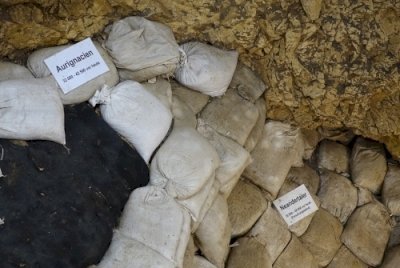
The Caves and Ice Age Art in the Swabian Jura was a welcome addition to the WH List this year for those ticking off Western European WHS on weekend trips. Recent reviews of it by Hubert and Clyde have already paved the way regarding all practical details necessary for a worthwhile trip. The site lies some 620km from my home, and I visited it by car with a stop-over in Darmstadt. I decided to not visit all locations, but instead, do some cherry-picking among the inscribed caves and associated museums with a special focus on seeing the figurines.
My day of exploration started at the Archäopark Vogelherd. At the park entrance, there is a small exhibition room, and that’s where I found my two first figurines: a mammoth and a cave lion. Both are tiny objects. They are on show in a display case each, and there’s nothing else in the room. The mammoth is easy to recognize as such and is in perfect shape. It has to be admired from the “front” though, as the other side is much rougher. This seems to suggest that it was a brooch or similar ornament worn on clothing or the body.
The other figure is said to represent a cave lion. With some imagination a tiger or a puma as we now know them can be seen in the object. “Cave lions” were widespread in the age of the early homo sapiens and could grow bigger than modern lions. They …
Keep reading 0 comments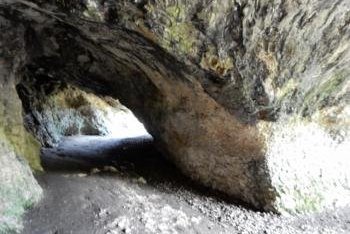
I recently went to Ulm to have a look at the newly inscribed Ice Age sites, and I picked the Vogelherd and Hohle Fels caves as the ones easiest to reach by public transport. Both can be done in a day (I went on a Sunday in summer), but because there are only 3 daily buses to Vogelherd (from the train station in Niederstotzingen), I could not visit the museum in Blaubeuren, as I had originally planned. The Vogelherd cave is part of the Archaeopark, a nice little museum/visitor centre/archaeological event centre. A relatively short walking path takes you to the actual cave, which is really quite small and open to the elements - hard to imagine how people back then would have survived a strong winter. In the afternoon, I took the train (via Ulm) to Schelklingen, from where it is about a 25-minute walk to the entrance of the Hohle Fels cave. There is a small exhibition at the entrance, and the actual cave is really quite big and impressive - to me, a real cave compared to Vogelherd, which just seemed to be an opening in the rock. You can walk all the way to the far upper end, it's just a bit slippery inside. Because I had no time for the museum on this or the following day (it is closed on Mondays), I thought that I had learned more about caves than about the actual cave art, but it was still an enjoyable day. Ulm …
Keep reading 0 comments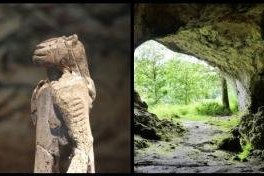
I visited this WHS in August 2017. I visited on a long Sunday road trip from Luxembourg so as to be able to visit the Hohle Fels cave.
Hubert's review was the main source of useful concentrated info on the 6 caves that make up this WHS as well as on the nearby museums where most of the finds can be seen. In my review I'll try to give further information and tips for any future visitors. In the forum, he also gave me a very good link with a useful map.
At the point where the Swabian Alb (plateau) inclines towards the Alpine foreland, it is believed that an enormous leap occurred in the cultural development of humanity - the first figurine representations of animals and humans are believed to have been created here as well as the first musical instruments. This is why these 6 caves have been inscribed as a WHS as the oldest Ice Age art (Aurignacian-Gravettian-Magdalenian periods) was found here. In a way, through this newly inscribed series, Germany tries to make up for the lack of prehistoric rock art and paintings when compared to other European countries.
The original Ice Age art can be viewed in 5 museums: one in Stuttgart, another in Tubingen and three quite close to the caves themselves - the Archaeopark Vogelherd in Niederstotzingen (open 10:00-18:00; 7 euro which also gives you access to the Vogelherd Cave); houses a small mammoth and a lion figurine from Vogelherd, the Ulmer …
Keep reading 0 comments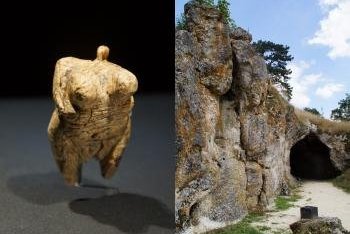
The paleontologists in Germany suffer a bit from the fact, that there are no sites of prehistoric rock art, not even simple scratches of arrows or circles, not to mention such beautiful cave paintings like in Chauvet and Altamira. But it is a kind of compensation that some of the earliest examples of figurative artworks were found in caves of the Swabian Alb. The objects are attributed to the Aurignacian and are about 40,000 years old. The figurines are made of mammoth ivory and are only a few centimetres tall, not larger than a matchbook. In total, about fifty figurines were found, mostly only fragments, less than half of them have been preserved in a way that they can be clearly identified. Most figures represent animals that lived during the last Ice Age in the Swabian Alb, like mammoth, wild horse or lion, but also bird and fish. Other remarkable items are small flutes made of ivory and bird bones, these are the oldest known musical instruments, also about 42,000 years old.
Two finds stand out: the Venus of Hohle Fels (excavated in 2008, photo left), which is considered the oldest sculpture of a human body, and the Lion Man, a hybrid creature of a human body with the head and limbs of a lion, with 31 centimetres it is by far the largest of the found objects. Amazingly, it was reassembled of more than 300 fragments.
The figurines are truly amazing and it's impressive how old they are. However, …
Keep reading 0 comments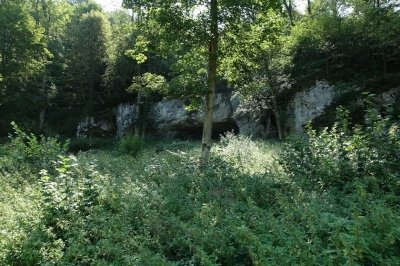
The Caves and Ice Age Art are yet another prehistoric site with all the caveats that go along with it. There isn’t all that much to see. The findings were moved off site and are shown in several museums. As upside, I really enjoyed hiking along the Lone valley on a sunny summer day. And as the caves aren't that touristy you are free to explore them.
Getting There
Blaubeuren and Schelklingen are on the same train line from Ulm. The caves are found between Schelklingen and Blaubeuren. Seeing the Urgeschichtliches Museum is in Blaubeuren, it seems best to start at the far end in Schelklingen and end up at the museum at the end.
Getting to the Lone area is a bit trickier. The Archäopark Vogelherd has a shuttle bus to the train station in Niederstotzigen. Bihourly there is a direct bus (#59) from Ulm stopping in Öllingen (get off at Hirsch) for the Bocksteinhöhle and Stetten ob Lontal (get off at Kirche) for the Archäopark. My recommendation would be to start in Öllingen. From the bus stop it's a 30min walk to get to the Lone river. Be advised that the signposting in the area leaves much to be desired and that especially the area around the Bocksteinhöhle is a bit challenging.
Google Maps is wrong for the area. The location of the Bocksteinhöhle is wrong. And the buses are missing from the public transport connections. Our data meanwhile is correct. The best public …
Keep reading 0 comments
